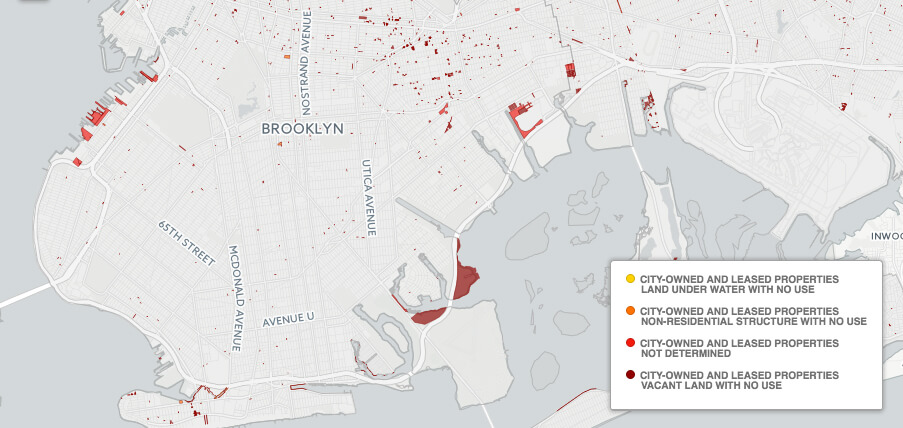Could City-Controlled Land Near You Be Put to Good Use? Find Out With MAS' New Map Tool
A recently released online interactive mapping tool shows New York City owned or leased properties that together make up an area roughly the size of Brooklyn.

New York City-controlled land. Map by MAS
In an effort to create a better and more inclusive city, the Municipal Art Society recently released an interactive map tool and report on city-owned and leased properties.
The tool, called Public Assets: City-Owned and Leased Properties, shows 14,000 properties owned or leased by the City of New York, allowing citizens to zoom into what is happening with the sites in their neighborhood. Located in all five boroughs, the city-controlled properties together equal 43,000 acres, or an area roughly the size of Brooklyn, according to the report.
“MAS envisions the release of Public Assets as the first step in an ongoing process designed to improve our public assets and contribute to a healthier, more dynamic, and inclusive New York City,” said the report.

Citizens can use the online tool to check out development scenarios and land uses, development trends, and restrictions on city owned and leased property.
The data comes from a New York City real estate database and includes information about the environment, infrastructure, landmarks, population, and neighborhood rezonings.
Did you know:
- 22 percent of city-owned properties are classified as having no current use.
- 64 percent are located in a flood plain.
- 665 properties are historic.
- 247 are toxic and cause pollution.
The information is up to date as of 2014, and will be updated again when the city releases new data in spring 2017, said MAS.
The nonprofit organization, which was founded in 1893, advocates for planning, preservation and community engagement. Their recent annual summit, held in November, focused on public assets.

The online mapping tool is part of a longer-term MAS project to improve public assets in the city. MAS also supports legislation that would create new datasets that would allow residents to track vacant land that could be used for affordable housing, track city promises during public review, and check out deed restrictions on city-owned land.
“Examining these holdings and evaluating opportunities for their protection, enhancement, and development should be a priority of this and any future administration,” said the organization in its report. “MAS believes that true equity in the city’s planning and land-use decisions can only be achieved through an informed and engaged public. Public Assets is a measurable step toward achieving that goal.”
Related Stories
- Brooklyn’s Homeless Shelters, Mapped
- Map: Subway and Development, More Than Crime, Affect Home Prices in Brooklyn
- A Map of All Our Building of the Day Posts
Email tips@brownstoner.com with further comments, questions or tips. Follow Brownstoner on Twitter and Instagram, and like us on Facebook.









What's Your Take? Leave a Comment